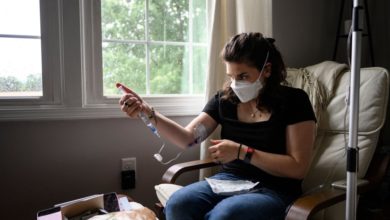Inside a Canadian Residential School for Indigenous Children
In late May of 2021, when spring was unfurling across the country, Canadians awakened to the discovery near Kamloops, British Columbia of 200 dead Indigenous children in unmarked graves. More grizzly discoveries would continue across the country tied to the nation’s history between 1881 and 1996 of forcing more than 150,000 Indigenous children to attend residential schools that were rife with abuse. The numbers of presumed corpses, mostly children, are now in the thousands. When the headlines emerged, announcing these unmarked gravesites one after another, it felt as though all of Canada had been summoned to a mass exhumation. Doubtless, the people most deeply traumatized by this nightmare were First Nations and Métis, but many of us in all walks of life have still not awakened from this nightmare. How could these schools, which were largely Catholic-run institutions, have operated for so long with such impunity? How could this have happened?
The late Joseph Auguste (Augie) Merasty, laborer, taxi driver, security guard, boxer, trapper, hunter, fisherman, town drunk, visual artist and memoirist has some answers to these questions. His memoir of life and abuse in these schools The Education of Augie Merasty: A Residential School Memoir was published in 2015. The excerpt below sheds light on the experiences Merasty had at St. Therese Residential School in Saskatchewan, Canada, which he attended from 1935-1944. — David Carpenter, editor of The Education of Augie Merasty
***
I was born in 1930 at Sturgeon Landing and baptized there by Father Aquinas Merton, who was also the principal at St. Therese Residential School from 1927, when the school was opened. Two of my sisters and my brother, Peter, were the first three to walk inside the school. Annie and Jeanette were the names of my two sisters. There were also six uncles and the same number of aunts who attended the school in its first year.
All those sisters and cousins, uncles, and many other unrelated people from other villages told me what had happened. Good and bad, positive or negative, were told to me and others when we got to school eight years later, and they all told basically the same stories. So one has to assume they were speaking the truth.
We used to enjoy going out miles away from the school, going on picnics, either to the beach or going fishing at the rapids north of the school. It felt so nice to get out of the enclosed playground. Most of the time, we were forced to stay within the yard, which was surrounded by a high barbed-wire fence. It felt like getting out of prison.
I really can’t recall just how many times I was made to pay for minor offences. I was once made to walk about twenty miles in –40°F weather with a fellow student, Abner Joseph, back to where we walked the day before, across the big lake with a strong wind blowing. I imagine the wind chill factor was about –60°F. Just because we lost one mitten each. We were very nervous and scared all the way, as we were only about eleven or twelve years old at the time. And we saw some fresh wolf tracks about six miles out on the lake and kept our eyes busy looking every which way, expecting to see some wolves following us.We came back without the lost mittens as the wind and snow had covered everything that could be lost. That was January 1941, and it was that meanest of all nuns, Sister St. Mercy, who had forced us to walk in that god-awful weather, only to come back empty-handed. We, of course, got the strap, twenty strokes on both hands.
Sometimes for punishment we were made to kneel on the cold cement floor from 8:30 p.m. until almost midnight, after everyone had gone to bed upstairs. We would fall asleep on the cold cement floor before Sister Mercy came or sent for her co-worker Sister Joy to tell us to go to bed upstairs. Then we were woken up early in the morning to go to church. We were usually awakened at 7:30 a.m., like it or not. All we used for toothpaste was salt, which the sister carried in a saucer. Salt, something we didn’t even get to use at mealtime. Yet the cows and horses were getting all they wanted in blocks in the fields.
They really enjoyed causing pain and other kinds of suffering as punishment for the smallest infractions. I think they were paranoid in the position they had, being masters of a lower race of creatures, Indians, as we were called.
“Indians from the bush, what can you expect?” was Sister Mercy’s favourite phrase.
They wanted to show who was superior, and no rule or order was to be broken or spoken against. They wanted to impress upon us that all this was for our own good and the will of God, and that the order of nuns, brothers, and fathers of the Oblates of Mary Immaculate (OMI) were to some degree servants of God on Earth, and we must take any punishment without complaints. To be disobedient was a sin in the eyes of God.
Every morning at breakfast, we ate rotten porridge and dry bread that was hard as cardboard. We always watched an impeccably white-clothed cart eight feet long being wheeled to the Fathers’ and Brothers’ dining room. Right through the centre of the refectory for all us boys and girls to turn and watch, licking our chops, all the beautiful food going past us ten feet away. It happened almost on a daily basis. Our keepers, one on the girls’ side and one on the boys’ side, banged on their clappers, and we were told to get back to our porridge and don’t turn our heads again or it would be detention or another kind of penance.
I always wondered why our keepers and teachers talked about Jesus, Mary, and Joseph and all the love they had for mankind, and Jesus being born in poverty and we should try to emulate him and learn to take punishment for our wrongs to pay here on Earth and not later in hell or purgatory. Apparently they didn’t know it was suffering enough to see all that beautiful food being wheeled by and only getting a smell of it. I know they never practised what they preached, not one iota.
Whenever there were visits from the head Catholic cleric in the district or visits from chiefs or members of council from any Indian reserve, they used to make us dress in our best clothing, provide concerts, and they even served us some edible food, beef stew or something. And they treated those northern visitors with good food and everything nice, and of course that chief or counsellor would get up at the end of the concert and speak from the stage facing all 110 children, telling us how lucky we were to be looked after in such a school as St. Therese Residential, and we should be thankful to God and to the administration for such blessings.
Oh, God, I used to think, what hypocrisy. Somebody sure pulled the wool over their eyes, because that is how it was meant to look, and it happened time after time.

The Education of Augie Merasty: A Residential School Memoir
More Must-Read Stories From TIME





